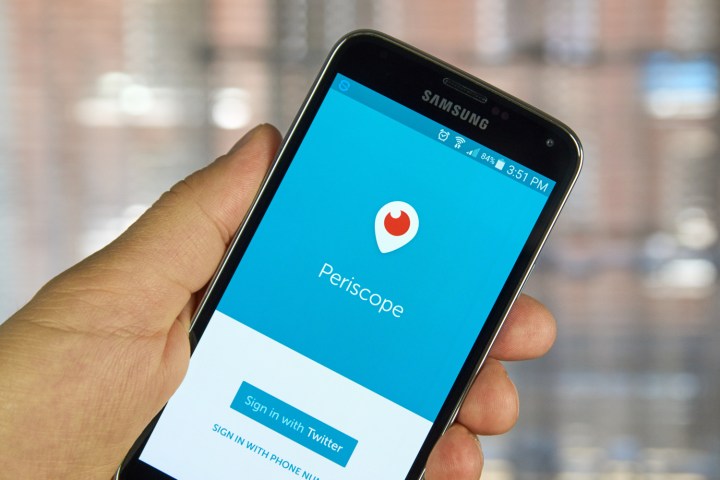
Of course, users wanting to take advantage of that will need a 360-degree camera, but there are plenty of them available, most of which you can simply plug into your phone’s microUSB or USB-C port.
If you want to watch 360-degree videos that are being broadcast live, you’ll be able to tell that they’re 360-degrees by the “Live 360” badge that will appear alongside them.
“As a broadcaster, 360 video allows you to spend less time and energy on framing your shot so you can focus on adding new dimension to your viewers’ experience,” said Periscope in a blog post. “In 360 broadcasts, viewers will be able to look anywhere while also having the broadcaster present to anchor the broadcast.”
While 360-degree video streaming is now available to Android, options are still a little limited. Currently, the only native 360-degree camera that’s supported by the app is the $130 Insta360 Air. Using the Periscope Producer app, you can broadcast 360-degree video using two external cameras, but you can only use the Ricoh Theta S and the Orah 4i at this point. Hopefully, we’ll see support for more cameras at some point in the near future. For example, it would be very helpful if more widely used cameras, like the Samsung Gear 360, were compatible with the app.
While the hardware features for Periscope are limited, the new launch shows the company is focusing on 360-degree video. That makes sense — Facebook launched a 360-degree live-streaming video feature at F8 in April, and Twitter, which owns Periscope, likely wants to try to compete.
Editors' Recommendations
- The best 360-degree camera apps for iOS and Android
- The Galaxy Note 20 brings seamless Android app integration to Windows 10
- Google I/O: Android Q aims to bring app permissions firmly under control


